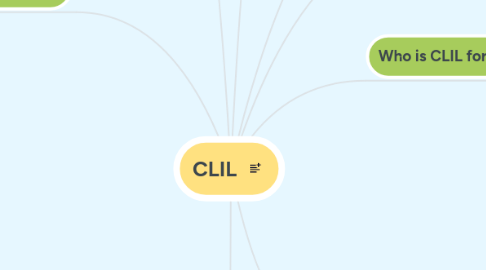CLIL
por Fanny Sandoval


1. What is the role of language in teaching CLIL?
1.1. Language is the center of learning, students learn to use language outside the classroom and this increased their cognitive level.
2. CLIL benefits:
2.1. • Construction of multicultural knowledge.
2.2. • Development of intercultural communication skills.
2.3. Increase in oral and written communication in another language.
2.4. • Increased motivation of students, through the reward of transferring
2.5. • Greater contact with the language being learned.
2.6. No overtime in class is required.
2.7. • Learning the language in a meaningful context.
2.8. • Spontaneity in the use of language.
2.9. Development of thought and concentration.
3. Learning program
3.1. During the course, participants are exposed to different types of activities and teaching methodologies in order to teach subjects in English.
3.1.1. Lesson demonstrations using the CLIL methodology
3.1.2. Adaptation and application of the subjects in the context of CLIL
3.1.3. Evaluation of published resources and sessions specifically designed to improve language
3.1.4. Practical sessions for lesson preparation
3.1.5. CLIL micro-lessons
4. What is CLIL?
4.1. Content and Language Integrated Learning or linguistic immersion is a teaching method that has been very successful in Europe.
5. What is CLIL based on?
5.1. is based on teaching any subject in the target language
6. What methodology is used in CLIL?
6.1. CLIL uses a practical methodology in which the student interacts all the time with the materials, the teacher and the environment.
7. Who is CLIL for?
7.1. This training program is aimed at:
7.1.1. Primary and Secondary teachers who wish to teach non-linguistic subjects in English
7.1.2. Language coordinators and / or responsible for bilingual projects in schools or educational institutions
7.1.3. Heads of English Department
7.1.4. Cycle coordinators, counselors and other educational professionals involved in the development of bilingualism projects
